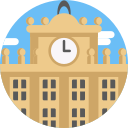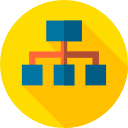Contents
The Economic Causes of European Maritime Exploration
Main idea
European monarchs sought new trade routes to gain easier access to Asian trade and to enrich their kingdoms.
Various economic factors led some European monarchs, royal families, and states to support early maritime explorations financially.
A desire for Asian spices and other Asian goods: European maritime expansion began with the goal of establishing new trade routes to African and Asian markets to buy ivory, pepper, cotton, and sugar.
A desire to circumvent Islamic control over trade: For centuries, Islamic trading powers had controlled exchange between the east and west. This trend continued as the Ottoman Empire expanded during the 15th By 1600, nearly all Asian goods had to pass through Ottoman-controlled territories and trade routes on their way to Europe.
A desire to break Italian trade monopolies: To keep the prices of goods high, the Ottomans only traded with a few Italian kingdoms. This Italian trading monopoly meant that if Europeans wanted African and Asian goods, they had to buy them from the Italians. The only way for Italian Europeans to decrease the cost of goods was to find new trade routes and trade directly with Africa and Asia.
A desire for new tax revenue: Competition between European kingdoms was intense, and monarchs wanted to grow their armies. Traditionally, during feudal times, European rulers relied on the wealthy land-owning nobility for soldiers and tax revenue. Increased trade provided additional tax money without relying on the nobility for tax collection, strengthening kings and queens and weakening the nobility.
The Effects of European Maritime Explorations
Main idea
European maritime explorations led some European states to build empires that took control over native land, resources, and economies to varying degrees. As European economic power increased, the economic power of indigenous peoples declined.
European maritime exploration resulted in the following significant global impacts:
The Portuguese established a trading post empire that stretched from the coastal regions of modern Brazil across Africa and Asia.
The Spanish conquered Latin America, South America, and the Philippines.
The Dutch, French, and English sought a northern route to Asia markets by exploring North Atlantic waters.
The three impacts above had the following economic similarities:
Europeans established new trading routes and connections.
Europeans took control of native peoples' economies.
Europeans took control of indigenous peoples' resources.
Europeans created massive systems of forced labor.
The Portuguese established a trading post empire
When the Portuguese arrived in the Indian Ocean and saw free-flowing trade not controlled by a large military power, they began using their armed ships to try and influence the movement of merchants and trading ships in the region. Over the next 100 years, Portugal built a powerful trading empire from Africa across the Indian Ocean to Asia.
Ways that Portugal attempted to control Indian Ocean trade included:
Forcing foreign trade vessels through Portuguese-controlled trading posts, they built in important coastal areas
Stopping merchant’s ships and forcing them to buy passes guaranteeing their safe passage
Forcing local rulers to provide the Portuguese with trading bases and special trading privileges
Significant Portuguese trading posts: Portugal’s goal was not to conquer and colonize large pieces of land but to trade. Portuguese trading posts were the bases of Portuguese operations and functioned as trade and military bases. By the mid-16th century, the Portuguese had over 50 coastal trading posts between West Africa and East Asia.
Kilwa in Swahili: In July of 1505, Portuguese commander Afonso de Albuquerque (1453 – 1550) conquered the Swahili city-state of Kilwa on Africa’s east coast. The Portuguese burned down the city and murdered many inhabitants. They then constructed Fort Gereza, where Kilwa once stood.
Mombasa in Swahili: The Portuguese further expanded into Swahili when they conquered the city-state of Mombasa. There they built Fort Jesus. They set up a customs house (for tax collection) on Pate Island nearby.
The Indian coast: At the height of their power in the Indian Ocean, the Portuguese had dozens of trading posts in India. Some forts were set up peacefully through partnerships with Indian allies, others taken by force.
- Goa: In 1510, Afonso de Albuquerque fought a series of battles to control Goa on India’s western coast. Unlike Portugal’s other trading cities along the Indian shores, which mainly consisted of military and trading forts, Goa’s capture placed a substantial piece of Indian territory directly under Portuguese control and administration. The Portuguese believed that by controlling Goa, they could use it as a base to defend their vast network of trading cities and factories in the region.
Malacca in Indonesia: In 1511, the Portuguese set sail from India to capture Malacca and gain control over the Strait of Malacca, which would give them control of the primary trading route between the Indian Ocean and China. By late August, Portugal controlled the city of and strait of Malacca. Its former ruler Sultan Mahmud Shah (died 1528), fled, ending the Sultanate of Malacca. The Portuguese controlled Malacca until the Dutch captured it in 1641.
Partial but short-lived success: While Portugal did become an influential trading power in the Indian Ocean region, it never succeeded in controlling most of the region’s trade. There were too few Portuguese and millions of native Africans and Asians. African and Asian traders successfully maintained their dominant role in the region’s commerce. By 1600 the Portuguese trading post empire was in decline.
Reasons for the decline included:
Too few Portuguese to dominate native traders
Many Portuguese blended into native societies and lost connection to Portugal
Competition from other European maritime powers
The Spanish colonized the Americas and the Philippines
Following the success of Portuguese expeditions, Spain, with whom Portugal shares the Iberian peninsula, began its own maritime explorations. Because Portugal had already established itself along the African coast and Indian Ocean region, Spain decided to travel west, leading it to rediscover the Americas for the Europeans.
Portugal and Spain divide the world: Between 1494 and 1529, Portugal and Spain signed a series of treaties (the Treaty of Tordesillas being the most famous) that divided the world into two pieces—one line went down the Atlantic Ocean and South America, and the other down East Asia and the Pacific. The agreements gave the Portuguese influence over lands east of the Atlantic line and the Spanish lands west of the line. The people whose land these agreements gave away without consent had no voice in the negotiations.
European expansion was a 500-year process that happened differently in different regions. In some places, like the Americas, the Philippines, and parts of Indonesia, Europe quickly gained nearly total control over the economy. Europe did not gain control over economies in many parts of Africa and Asia until the 18th and 19th centuries.
Portuguese territories
- The east coast of South America (modern Brazil)
- Africa
- Asia
Spanish territories
- Latin America
- South America
- Portions of western and southern North America
- The Philippines
Spanish conquest of the Aztecs and the Inca: Conquistadors (conquerors) led Spanish conquests in the Americas. These conquistadors conquered the Aztec and Inca societies.

- Hernan Cortes (1485 – 1457) led the expedition that caused the fall of the Aztec Empire and brought large portions of mainland Mexico under Spanish rule in the early 16th century. Cortes served twice as the governor of New Spain between 1521 and 1524.

- Francisco Pizarro (1478 – 1541) was a Spanish conquistador who led the Spanish conquest of the Inca in 1532. Pizarro was the governor of New Castille in Spanish Peru from 1529 to 1541.

- Ferdinand Magellan (1480 – 1521) was the first European to reach Asia by sailing west. While Magellan was Portuguese, he sailed west under the Spanish flag. Magellan set sail from Spain in 1519. By March 1521, Magellan and his crew had crossed the Pacific and landed on the Philippine Island of Cebu. Magellan claimed the Philippines for Spain. After engaging in conflict with natives on the nearby island of Mactan, a poison arrow hit Magellan, and he died. Following Magellan’s death, the Vittoria, one of his ships, continued west and returned to Spain on September 6, 1522. In 1565, Spain returned to the Philippines and began a campaign of conquest. The Philippine natives put up a fierce resistance but were defeated.
Silver in Spanish America: The discovery of vast quantities of silver in conquered Inca lands in Bolivia turned Spanish America into the world’s largest producer of silver. At peak production, Spain produced 85% of the global supply of silver. Most of the silver came from the Potosi mine. Within decades, Potosi was the biggest city in the Americas. Much of the silver went to Spain, making the Spanish monarchy the richest in Europe. However, vast quantities of silver also went east, where Europeans used it to buy Asian goods. Eventually, most silver ended up in China to meet the increased demand for the metal after the Chinese government in 1570 began requiring its people to pay taxes in silver.
New types of economic production in the Americas: Spanish conquest brought cash crop agriculture for commercial profit to the Americas. Across Spanish territory, plantations on large estates produced old-world crops like wheat or raised domesticated animals such as pigs and cattle. While in their Caribbean colonies, the Spanish mass-produced sugar. The new wealth in the Americas created by cash crops went to Spanish landowners, not indigenous peoples.
Systems of forced labor: Spanish America thrived on forced labor to meet the need for workers in gold and silver mines and on commercial agriculture plantations. Indigenous communities were the first targets of exploitation. However, indigenous peoples could escape the Spanish and were dying in large numbers from newly introduced diseases brought by Europeans. As a result, the Spanish turned to the importation of enslaved Africans transported to the Americans through the brutal transatlantic slave trade.
New trade routes: The flow of silver and agricultural resources out of Spanish America resulted in new maritime trade routes. The most active of these new routes crossed the Atlantic—often called the triangle trade or the Columbian exchange. Trade also began from the Western coast of Spanish America to Asia. The Mexican port of Acapulco was the main point from which silver left the Americas on its way to the Spanish Philippines.
The French and English in North America
European conquest and colonization in North America began later than in the rest of the Americas. As a result, the economic impacts of colonization took longer to develop in the north.
Year | Location | European power |
|---|---|---|
1605 | Port Royal in Nova Scotia, Canada | France |
1607 | Jamestown in Virginia, United States | English |
1615 | Fort Nassau in New York, United States | Dutch |
Before 1750, America’s primary exports were
Furs and skins
Tobacco
Grains and cereals
The North American fur trade: The settlement of North America happened during a long period of cold weather called the Little Ice Age. As temperatures decreased, demand for warm furs worn by social elites increased. At the same time, the supply of fur-bearing animals in Europe fell as the European population expanded into animals’ habitats. The English and French looked to their new colonies in North America to meet growing demand.
- Europeans trapped and hunted very few animals themselves. Instead, traders purchased furs and skins from Native Americans in exchange for goods like metal tools, blankets, and liquor.
- By the early 1700s, hundreds of thousands of skins and furs left North America for markets in Europe and Asia each year. As hunting increased, environmental damage also increased. In some regions of the southeastern British colonies, hunters nearly destroyed the native deer population. Demand for beaver pelts to make hats almost caused the extinction of the North American beaver. Years of conservation efforts have since restored many of the lost beaver populations.
Cash crop agriculture: North America’s main cash crops during the 1700s were feed grains (wheat, corn, and flour) and tobacco—cotton did not become a significant cash crop until the late 1700s. Tobacco was most important in the colonies of Maryland and Virginia, and its cultivation led to many changes.
High European demand for tobacco increased the value of tobacco, which accelerated the economic growth in the American colonies.
Tobacco cultivation as a cash crop shifted America from a subsistence economy to an agricultural economy.
Tobacco production requires a lot of labor. A lack of available workers and the greed of plantation owners for higher profits shifted tobacco production to a slave-based force.



































